Over the Years
Home > Over the Years > Over the Fiscal Years (2010 APR - 2020 MAR) > Five Doctors from USA and Korea Invited for Training
Five Doctors from USA and Korea Invited for Training
HICARE invited two doctors from US and three doctors from Korea who are specialists of radiation oncology, for training on the treatment of radiation disorders.
Names and Titles of Trainees
1.James Welsh
The University of Texas MD Anderson Cancer Center (USA)
Assistant Professor of Radiation Oncology
2.Beth M. Beadle
The University of Texas MD Anderson Cancer Center (USA)
Assistant Professor of Radiation Oncology
3.Bae-Kwon JEONG
Gyeongsong National University Hospital (Korea)
Assistant Professor of Radiation Oncology
4.Moon-Kyoo KONG
Kyong-Hee University Hospital (Korea)
Department of Radiation Oncology
5.Ji-Hoon CHOI
Yeungnam University Hospital (Korea)
Department of Radiation Oncology
Period of Training:
July 18 to 24, 2012 – Trainees 1, 2
July 18 to 26, 2012 – Trainees 3, 4, 5
Training Organizations (in order of visits):
Radiation Effects Research Foundation
Kurakake Nozomi-en (A-bomb survivors nursing home)
Hiroshima University Hospital (Advanced Emergency and Critical Care Center)
Hiroshima University Hospital (Department of Radiation Oncology)
Hiroshima Red Cross Hospital & Atomic-bomb Survivors Hospital
Hiroshima Atomic Bomb Casualty Council
The 6th s. Takahashi Memorial Symposium & The 6th Japan-U.S. Cancer Therapy International Joint Symposium / The 4th Japan-Korea-China Trilateral Symposium on Radiation Oncology
(held on July 19 to 21 at the International Conference Center Hiroshima)
Hiroshima Peace Memorial Museum and others
Training Course:
Diagnosis of radiation disorders
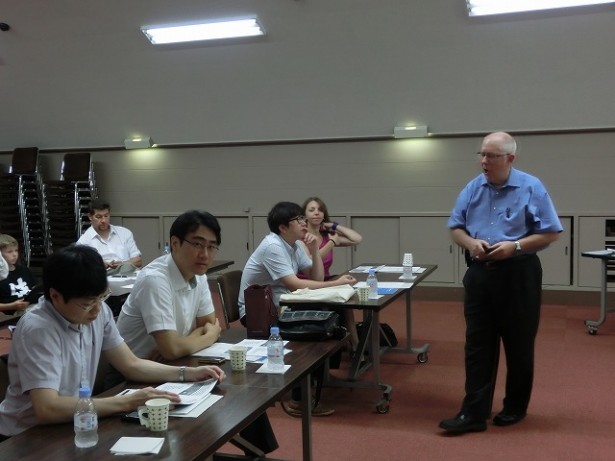
Training session of Dr. Douple, Chief Scientist of Radiation Effects Research Foundation (far right)
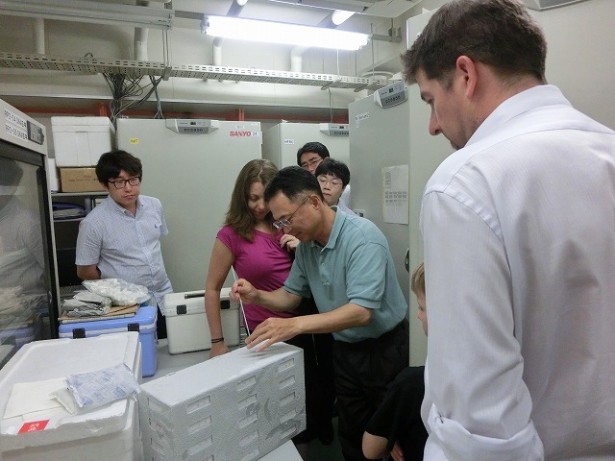
With Assistant Department Chief Tomonori Hayashi of the Department of Radiobiology/Molecular Epidemiology, Radiation Effects Research Foundation (center)
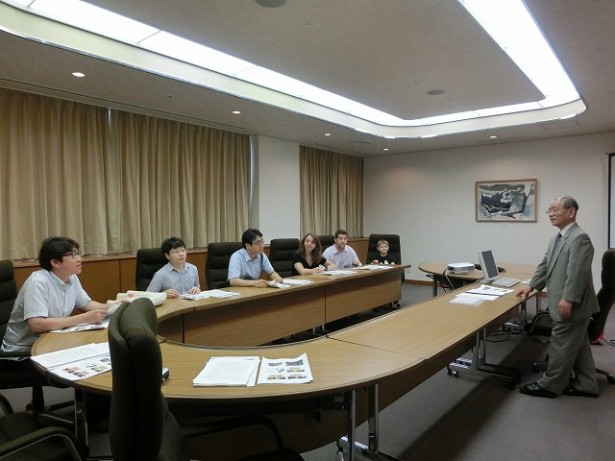
With Dr. Nanao Kamada, Board Chairman of Hiroshima A-Bomb Survivors Relief Foundation (far right)
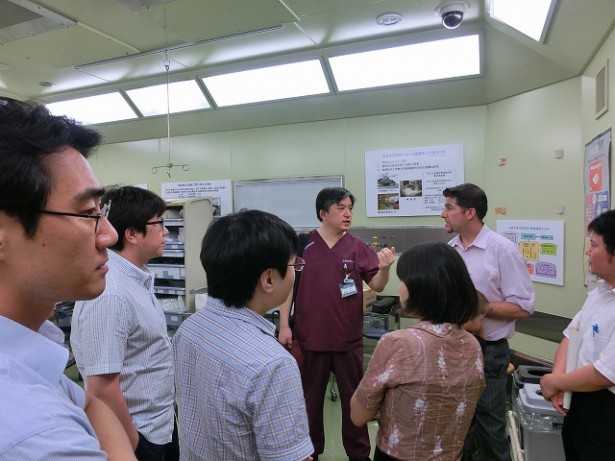
With Associate Professor Nobuyuki Hirohashi, Advanced Emergency and Critical Care Center of Hiroshima University Hospital (center, back row)
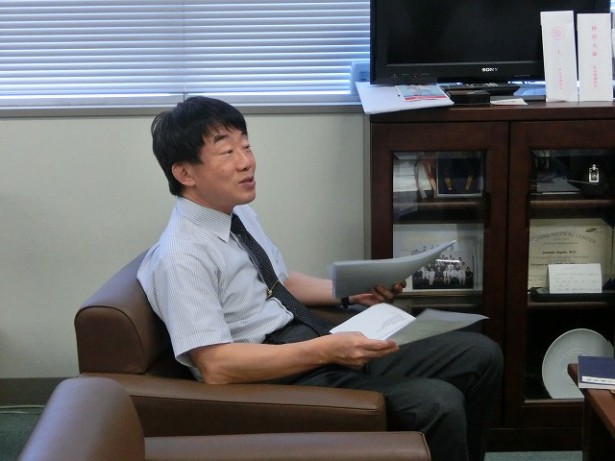
Professor Yasushi Nagata of Department of Radiation Oncology, Hiroshima University Hospital

Trainees talking with Professor Nagata
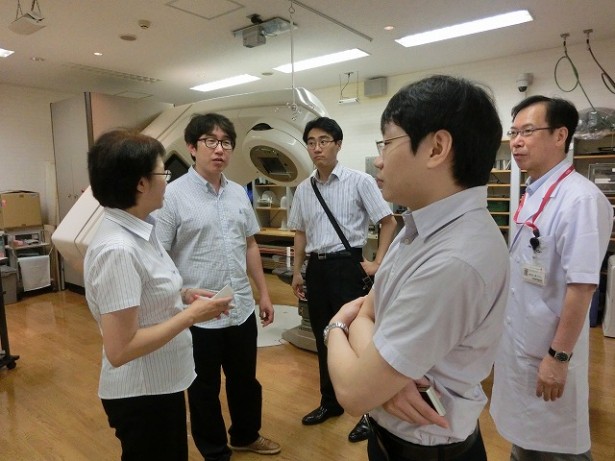
With Dr. Kenichi Arita, Director of Department of Respiratory Disease of Hiroshima Red Cross Hospital & Atomic-bomb Survivors Hospital (far right)
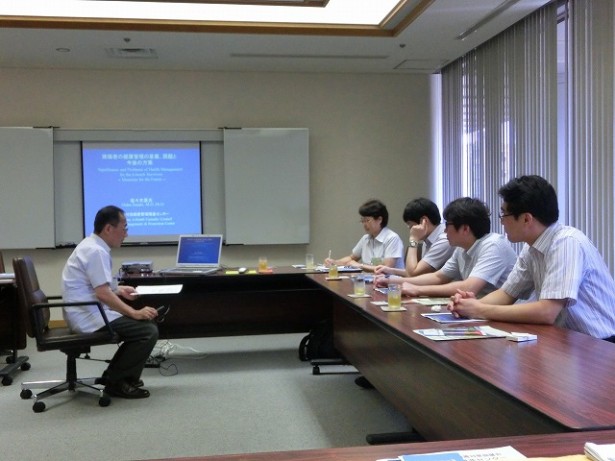
With Dr. Hideo Sasaki, Director of Health Management & Promotion Center, Hiroshima Atomic Bomb Casualty Council (far left)
Feedback
◆The opportunity to visit the sites of Hiroshima and learn of the scientific investigations following the A-bomb was priceless. As radiation oncologists, the lessons learned from the survivors helps guide our understanding of safety. Furthermore, the strength and perseverance of the Japanese people is an inspiration for future peace.
I am going to share the scientific and historical knowledge I learned on my trip with my colleagues and friends. I will also use the scientific concepts in my practice to understand potential long-term effects of radiation.
◆I learned about the efforts of the government and physicians who contributed to the reconstruction of the ruined city and treatment of radiation injuries of A-bomb victims, together with issues for the future. I will definitely give lectures about what I learned to my university students back home. I would also like to study about the possibility of differences in diseases caused by A-bomb radiation among people of different races by comparing materials collected from Korean A-bomb survivors and Japanese survivors.
◆I felt severe pain that I cannot describe in words seeing the tragedy of Japanese history. As a physician, I was deeply moved by the Japanese people’s efforts for reconstruction, support, and follow-up care after the atomic bombing. And as a radiation oncologist, I was impressed with the volume of priceless materials collected from A-bomb survivors.
I would like to thank all the lecturers for their detailed explanations. I believe that what I learned in the training will be very helpful in diagnosis and treatment of my patients.
I had mixed feelings looking at the historical and modern buildings standing together in Hiroshima.




